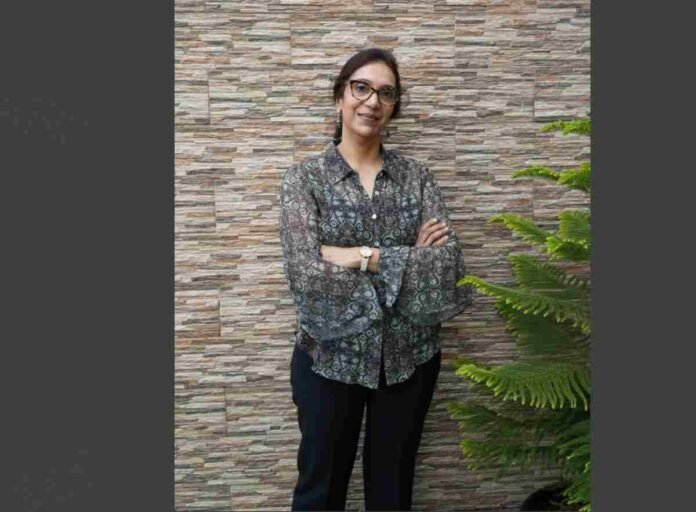Dr. Vaishaly Bharambe, Founder of VB Anatomy Academy and a medical educator with over 25 years of experience, is reshaping anatomy education by combining clinical relevance with digital and immersive technologies. Through her YouTube platform and academic leadership roles, she emphasizes clarity, student engagement, and future-ready learning. Her work with DeftXR highlights the transformative role of 3D and virtual reality in medical training. A passionate advocate for organ and body donation, Dr. Bharambe integrates ethics, public trust, and awareness into her teaching. Rooted in the values of discipline and integrity from her military upbringing, she continues to inspire students with her vision, mentorship, and commitment to both education and society.
Questionnaire from Global Entrepreneur
1.You’ve dedicated over 25 years to teaching anatomy. How has your approach to medical education evolved over time, especially with the rise of digital and immersive tools?
- Over my 25+ years of teaching anatomy, my approach has evolved to emphasize clinical relevance—students must understand anatomy as a foundation for clinical excellence.
- Teaching should be practical, not just encyclopedic. With digital tools becoming central to student learning, I believe in reaching them through their preferred mediums. Immersive technologies now allow us to create lifelike, clinically integrated experiences, making anatomy education more engaging, effective, and future-ready.
2. VB Anatomy Academy on YouTube has become a popular resource for students across disciplines. What inspired you to create this platform, and how do you ensure it maintains both academic depth and student-friendly clarity?
- VB Anatomy was born out of the realization that today’s students are immersed in digital learning—often on the move and away from traditional books. I wanted to meet them where they are. To ensure academic depth, I tailor content based on clinical relevance and target audience—often adding a bit extra to spark curiosity. My visual learning style, love for clarity, and use of diagrams help make even complex topics easy and engaging.
3.From setting up an anatomy department at Symbiosis Medical College to serving as Deputy Director for Organ Donation, your leadership roles have been diverse. What qualities do you think are essential for effective academic leadership in medical education today?
- From setting up the Anatomy Department at Symbiosis to leading organ donation initiatives, I’ve learned that effective academic leadership requires a clear vision, deep subject knowledge, and an understanding of where education is headed. Leaders must know how medical knowledge translates into future roles—not just clinical, but also in research, innovation, and public health. Strong ethics, financial acumen, and student-centered thinking are essential. In organ donation, one must also possess a firm grasp of ethical frameworks, legal processes, and the ability to inspire public trust. Leadership today is about informed guidance, compassionate mentorship, and a commitment to national and societal good.
4.You’ve integrated virtual reality through your work with DeftXR. In your view, how will 3D models and immersive tech shape the future of anatomy learning and medical training in India?
- My work as an Academic consultant for creation of a 3D human being, has strengthened my belief that immersive technology is the future of anatomy and medical training. By letting students virtually explore, dismantle, and reassemble the human body, we give them a powerful way to grasp complex spatial relationships. 3D environments also allow realistic clinical scenarios for hands-on practice—lifelike, timed, and safe. This is not just innovation—it’s transformation.
5.You’ve published extensively on topics like surgical anatomy and medical education. Could you share a research insight or finding that you feel has had a meaningful impact on the way anatomy is taught or learned?
- One key insight from my research is that anatomy is best learned through active participation, not passive lectures. Encouraging students to engage in practical, discussion-based activities—even when tackling theory—makes learning more meaningful. Group interactions, peer explanations, and real-life context help embed anatomical concepts deeply and sustainably. Today’s learners thrive on interactivity, and our teaching must reflect that.
6.Organ and body donation have been a consistent focus in both your academic and social work. What drives your passion in this area, and how can awareness about it be strengthened among students and the general public?
- My passion for organ and body donation stems from the deep trust shared by the participants of my PhD research—donors, recipients, and their families—who opened up their lives and grief to help others. I feel a lifelong responsibility to amplify their voices. As an anatomy teacher, I’ve seen how donated bodies profoundly shape medical learning.
- Among students, awareness grows best through direct exposure—participating in dissection and observing transplant or body donation activities firsthand. These powerful experiences leave lasting impressions that naturally extend into public advocacy. For the general public, the most effective awareness comes from real stories—donors, recipients, and their families sharing their journeys. Genuine voices inspire trust during conversations around donation.
7.As someone who grew up in a military family, how have values like discipline and integrity influenced your teaching philosophy and mentoring style over the years?
- Growing up in a military family, discipline and integrity were non-negotiable values—woven into daily life. These principles naturally became the foundation of my teaching and mentoring style. I believe in having a clear vision, pursuing it with consistent hard work, and always acting with honesty and fairness. This approach has guided not just my own journey but has also shaped how I mentor students—with purpose, clarity, and an unwavering ethical compass.

